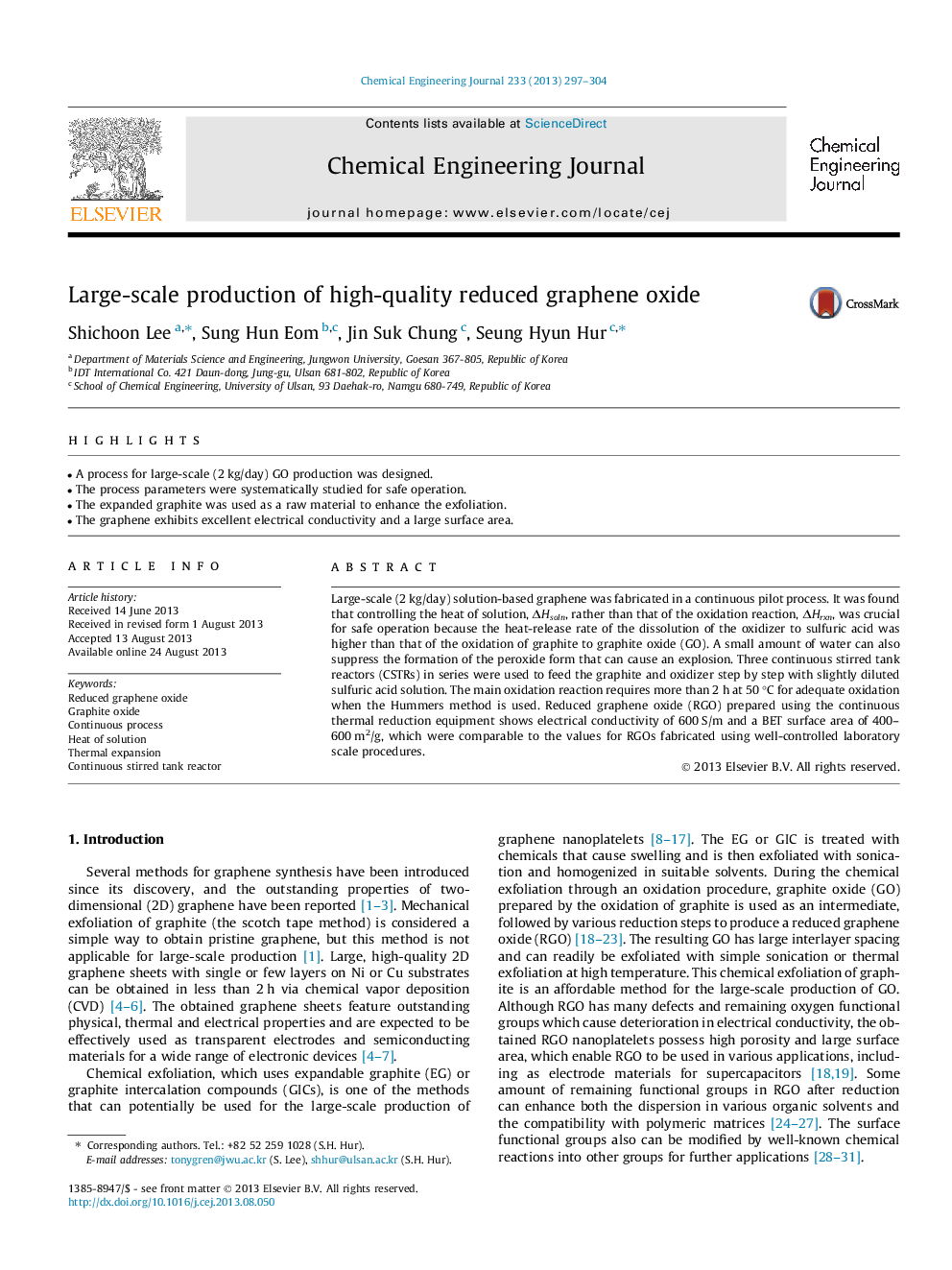| Article ID | Journal | Published Year | Pages | File Type |
|---|---|---|---|---|
| 6586847 | Chemical Engineering Journal | 2013 | 8 Pages |
Abstract
Large-scale (2 kg/day) solution-based graphene was fabricated in a continuous pilot process. It was found that controlling the heat of solution, ÎHsoln, rather than that of the oxidation reaction, ÎHrxn, was crucial for safe operation because the heat-release rate of the dissolution of the oxidizer to sulfuric acid was higher than that of the oxidation of graphite to graphite oxide (GO). A small amount of water can also suppress the formation of the peroxide form that can cause an explosion. Three continuous stirred tank reactors (CSTRs) in series were used to feed the graphite and oxidizer step by step with slightly diluted sulfuric acid solution. The main oxidation reaction requires more than 2 h at 50 °C for adequate oxidation when the Hummers method is used. Reduced graphene oxide (RGO) prepared using the continuous thermal reduction equipment shows electrical conductivity of 600 S/m and a BET surface area of 400-600 m2/g, which were comparable to the values for RGOs fabricated using well-controlled laboratory scale procedures.
Keywords
Related Topics
Physical Sciences and Engineering
Chemical Engineering
Chemical Engineering (General)
Authors
Shichoon Lee, Sung Hun Eom, Jin Suk Chung, Seung Hyun Hur,
